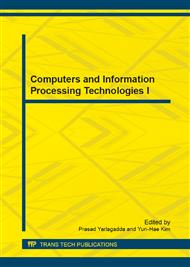p.1163
p.1168
p.1172
p.1176
p.1180
p.1184
p.1189
p.1195
p.1202
Financial Market Risk Overflow Modeling and Inspection Based on Support Vector Machine
Abstract:
Combined granger test statistics based on VaR and CCF and machine learning theory to establish financial market risk overflow model of support vector machine. To analyze risk information overflow by the statistic characteristics of risk information overflow structure. The model can more effective to test variety forms of risk overflow, Main performance is the extreme risk for information received peripheral selectivity and market volatility non-stability. Emerging markets characteristics in A Shares is evident, the performance are the selective reception of outside extreme risk information. Empirical results demonstrate that models have certain value to the management and control of overflow risks in financial markets.
Info:
Periodical:
Pages:
1189-1194
Citation:
Online since:
June 2014
Authors:
Price:
Сopyright:
© 2014 Trans Tech Publications Ltd. All Rights Reserved
Share:
Citation:


